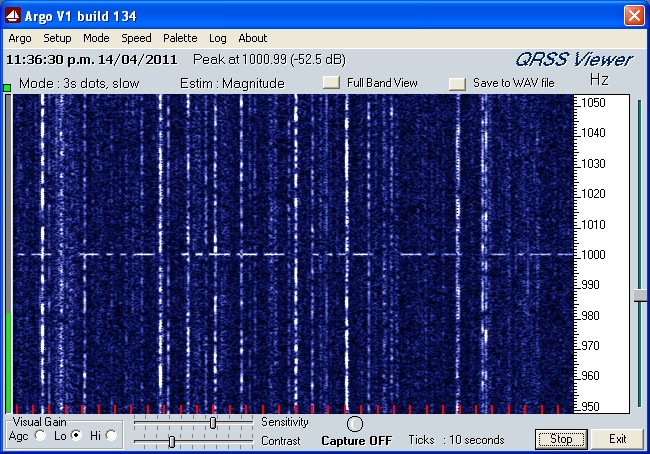
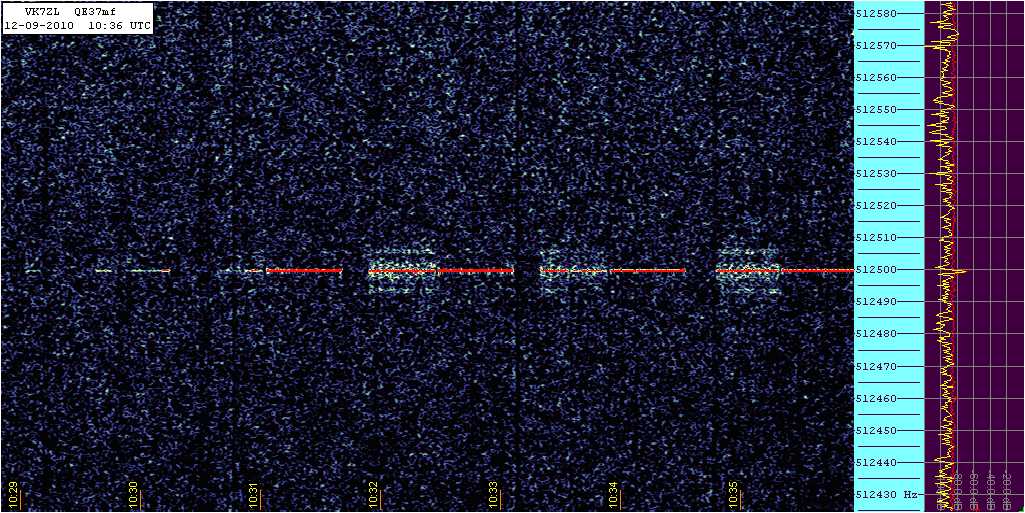
I am planning to place all reception reports here. They will be sorted by date and relevant information, such as power to the antenna, will be included for comparison.
The beacon message consisted of normal CW followed by a long (~ 40 s) dash. The power output of the transmitter was 20 W. The RF current was between 0.5 A and 1 A - I used my 0-4A RF ammeter which is not accurate for currents less than 1 A.


This time I started with 10 W but changed to 20 W soon after. The beacon message was QRSS3 with normal CW in between. Murray, ZL1BPU was transmitting a few Hz higher, so his signals can be copied in parallel to mine.

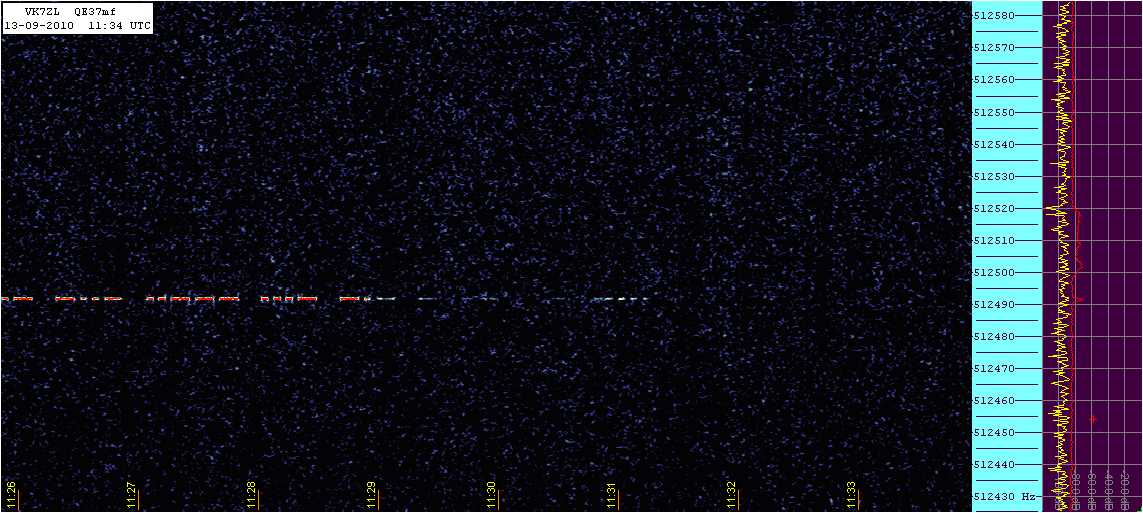
[Email from Murray to the 600m yahoo group] Hey Dimitris! I can see your signal! You've made it across the pond! What's your locator? Mine is RF72is. Congratulations - Murray
This is not a formal id of my signal, but it indicates that it certainly is possible to receive my tiny signals some 2300 km away!
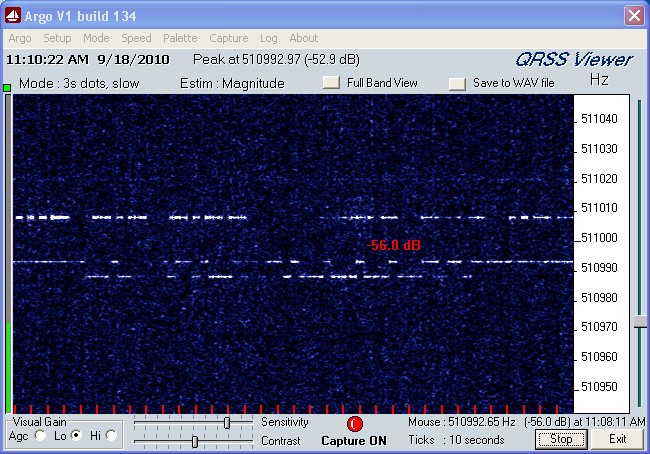
Some WIA 600m experimental stations have switched to WSPR mode in the past month. All activity is centered around 508.100 kHz (+/- 100 Hz). This is dial frequency 0.506600, USB mode on the receiver, assuming the default 1.5 kHz offset.
Groundwave signals are routinely received at 250 km and at nighttime, the skywave dominated signals are received at much greater distances.
The power to the antenna run by all stations is in the range of 1 W to 5 W.

Signals from AX2VKX, AX2VKY and AX2VLA received at VK2DDI.
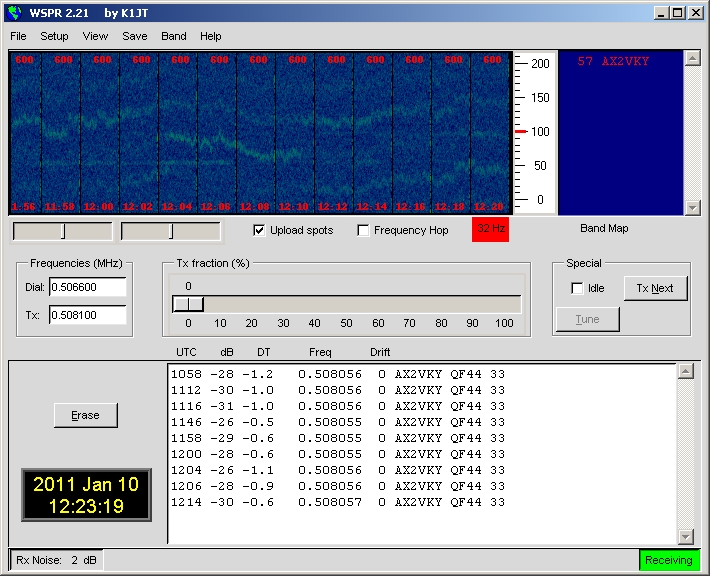
AX2VKY is received in Tasmania, at VK7ZL.
AX2VLB transmitted on 508.1 kHz WSPR (+50 dBm) through the night. Four stations, VK3DB, VK1SV, VK7ZL and VK6XT provided WSPR reports throughout the night. The following plot was made with the reported S/N from those four stations:
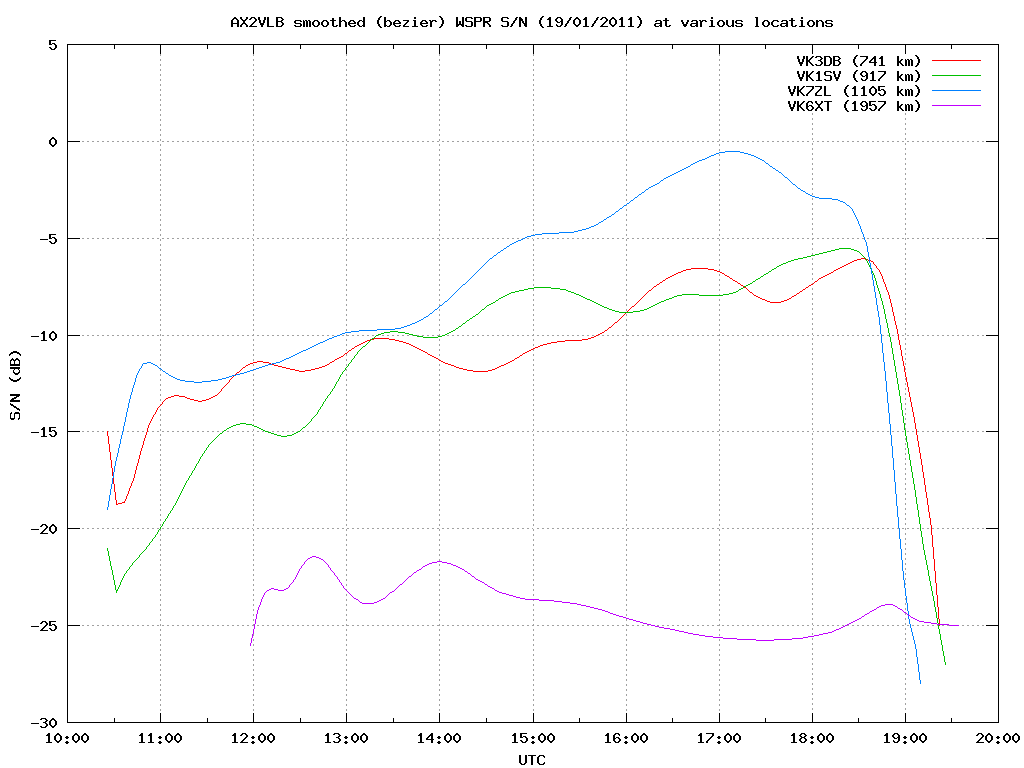
In the following figure, I have included the raw and smoothed plot of the AX2VLB S/N as received by my humble PA0RDT miniwhip:
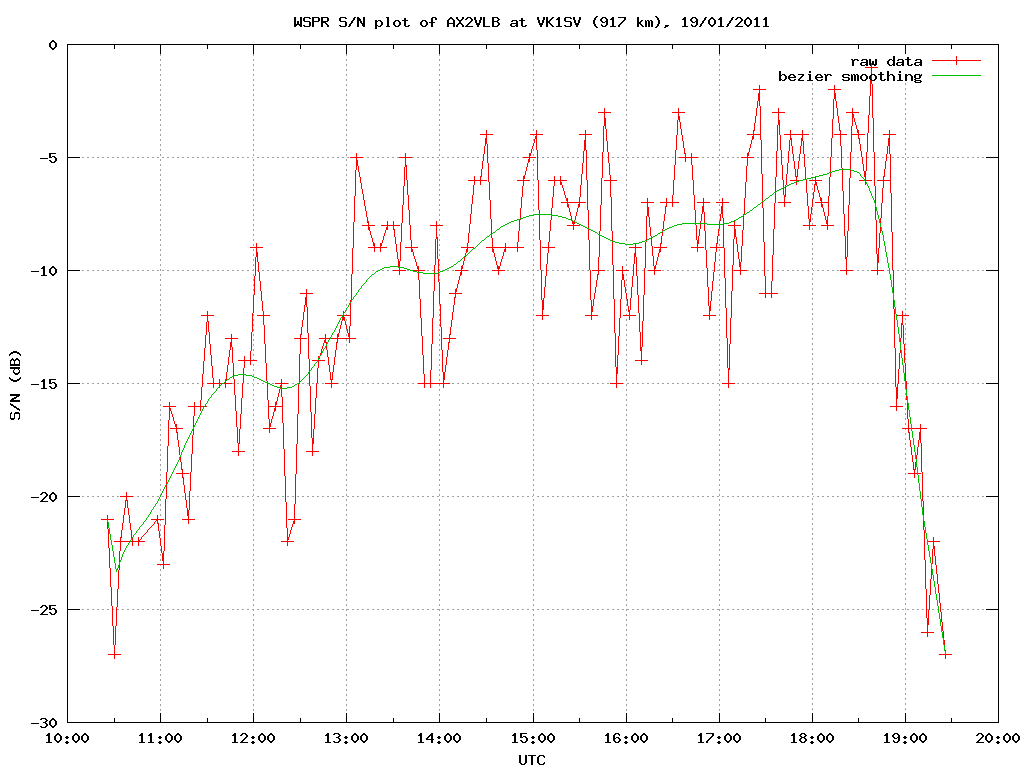
AX2VLB transmitted overnight again. The results are similar to yesterday's results.
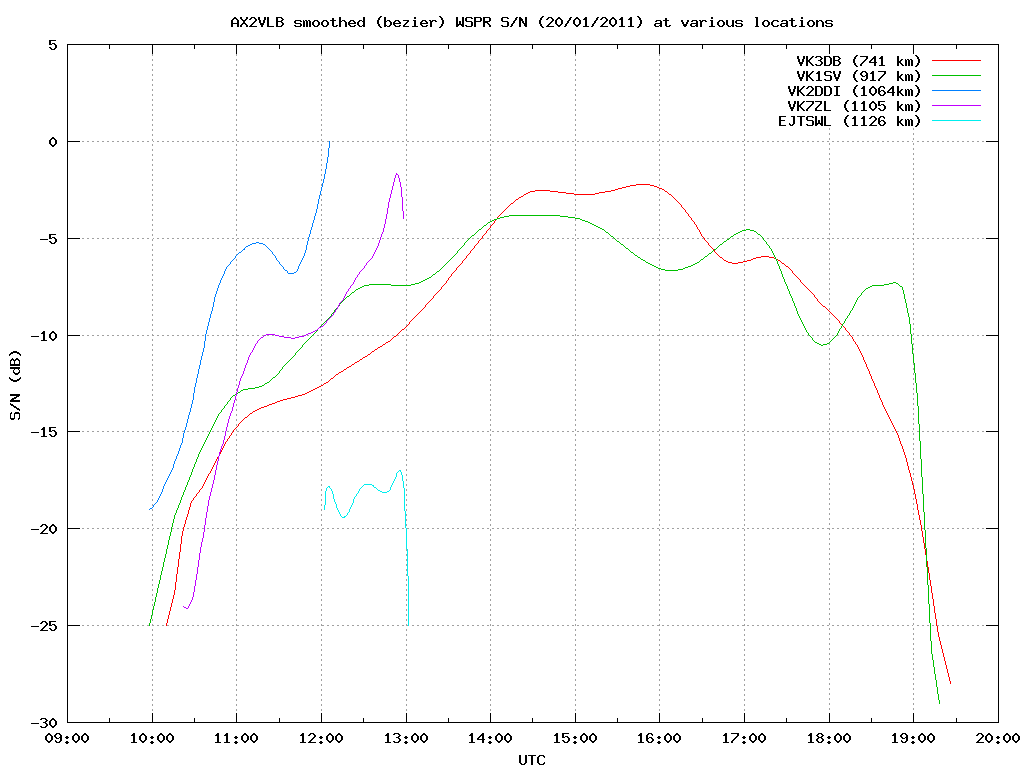
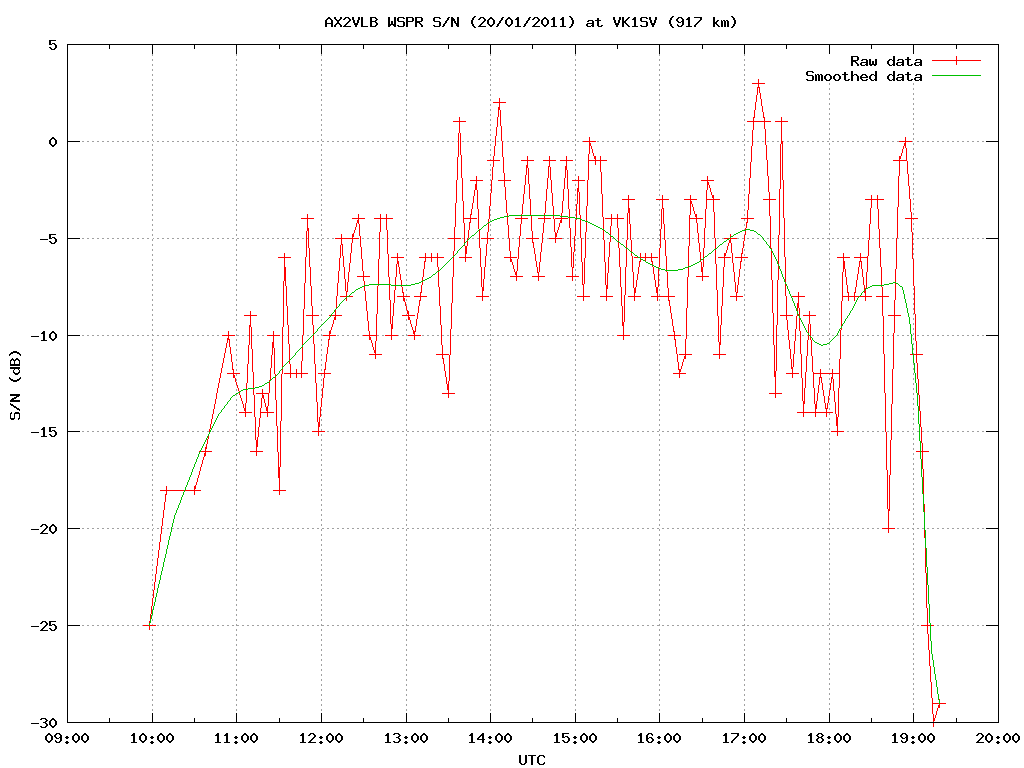
The first plot is of the reception reports of AX2VKY (VK1SV). The transmitter power output was 5 W. There are six receivers providing reports, some at a close distance (less than 500 km) and some further away. It is interesting to see that the nearby stations don't seem to be affected by the skywave as much.
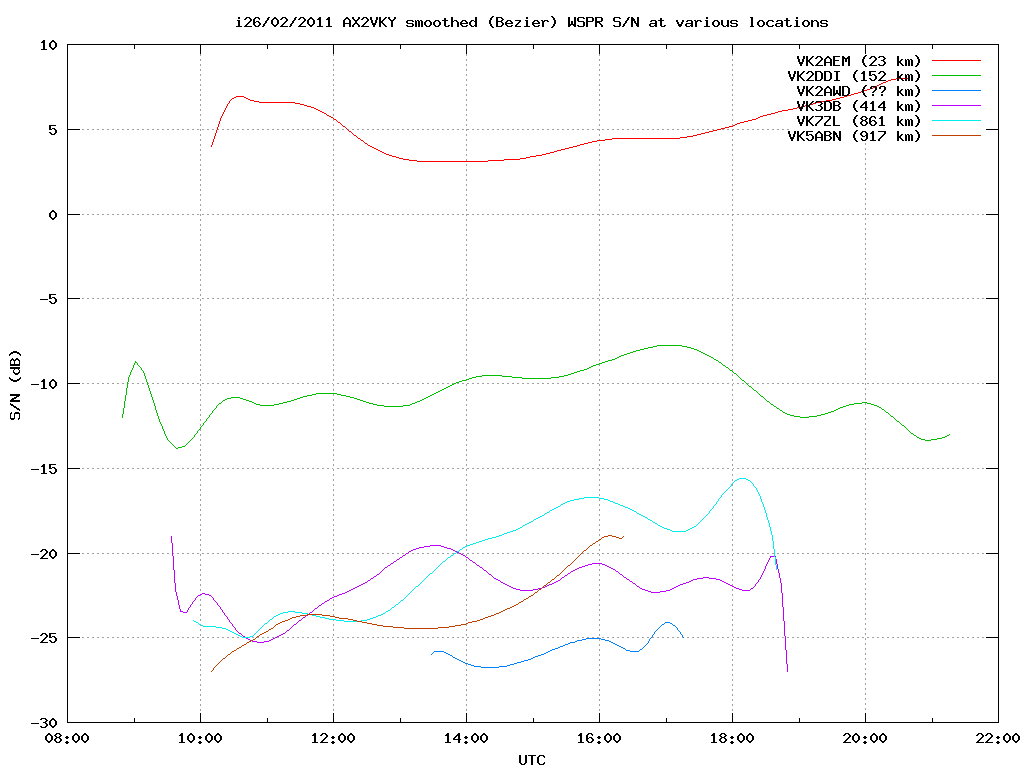
The following plot focuses on the two nearby stations (VK2AEM and VK2DDI) and shows how skywave intereference increases as the S/N decreases and the distance increases.
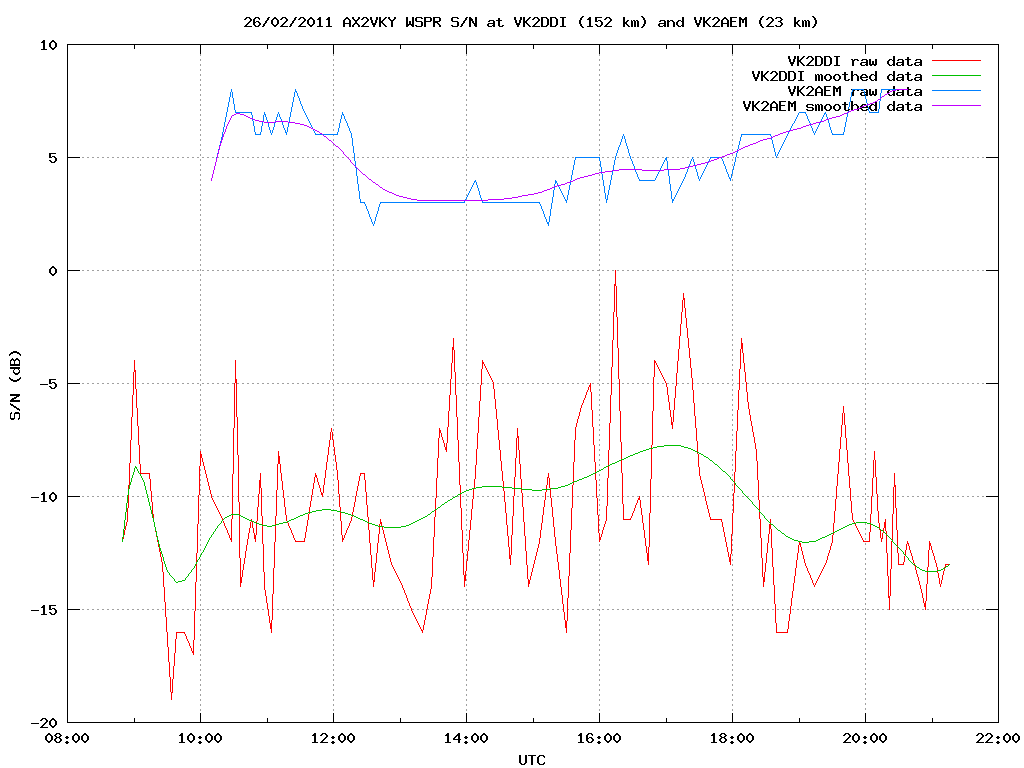
All receivers of AX2VLB (VK5ABN) are mostly receiving the skywave. This appears in the graph as the familiar "slow start" and "rapid decline" in the signal, at sunset and sunrise respectively. AX2VLB was running at 100 W output which helped produce high S/N ratios which result in a "clean" plot.
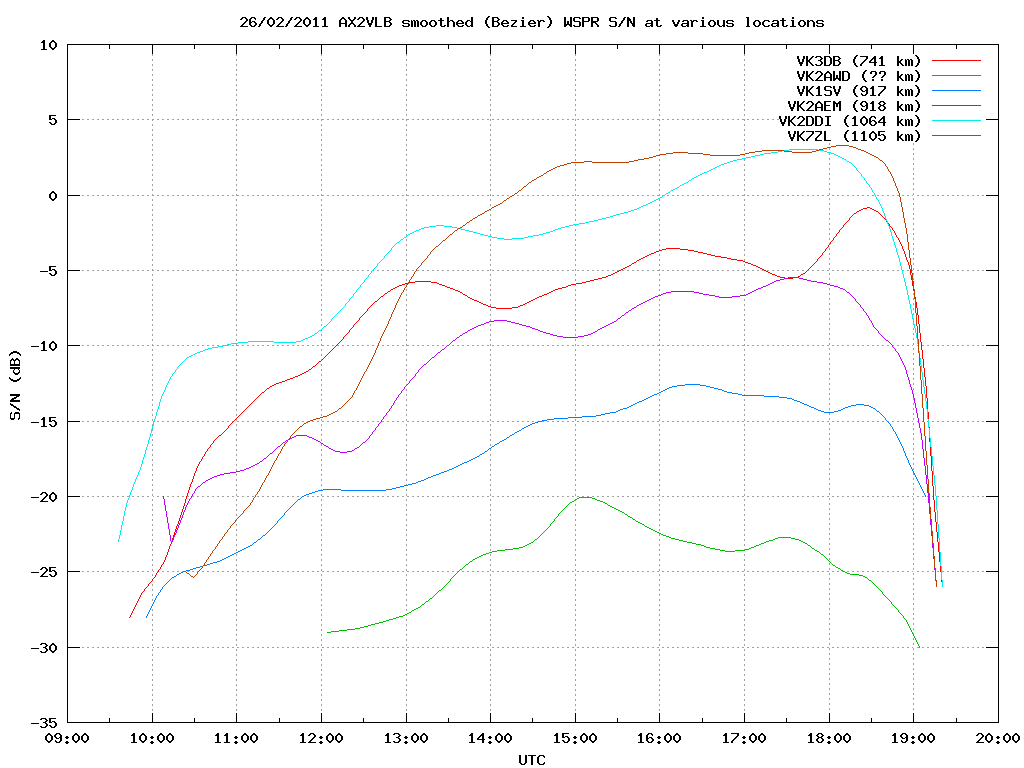
This was an excellent day for AX2VKY on 600 m. Used the original CW/QRSS3 transmitter, putting 25 W to the aerial. Received reception reports from 4 stations, from NSW, Tasmania, Victoria and New Zealand.
VK2DDI - David, Mt Berri (about 150 km):
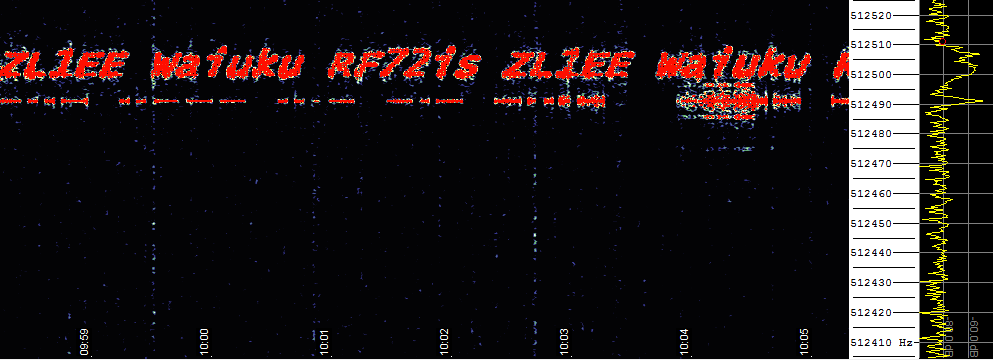
VK3DB - Dale, Moe (414 km):
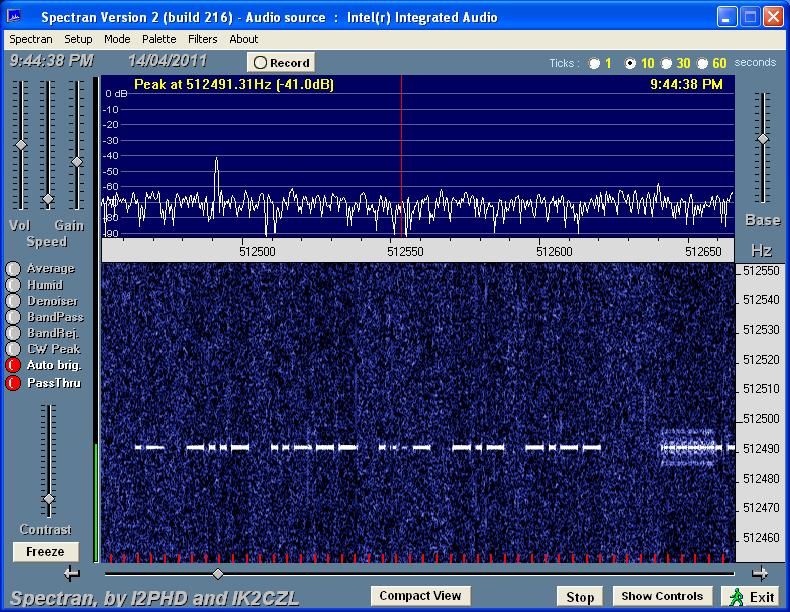
Edgar, Moonah Tasmania (865 km):

ZL1BPU (aka ZL1EE) - Murray, Waiuku (2307 km):
